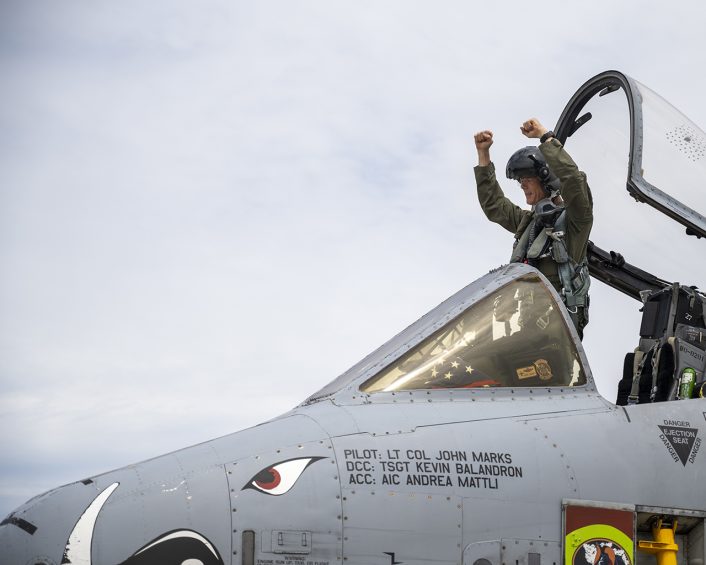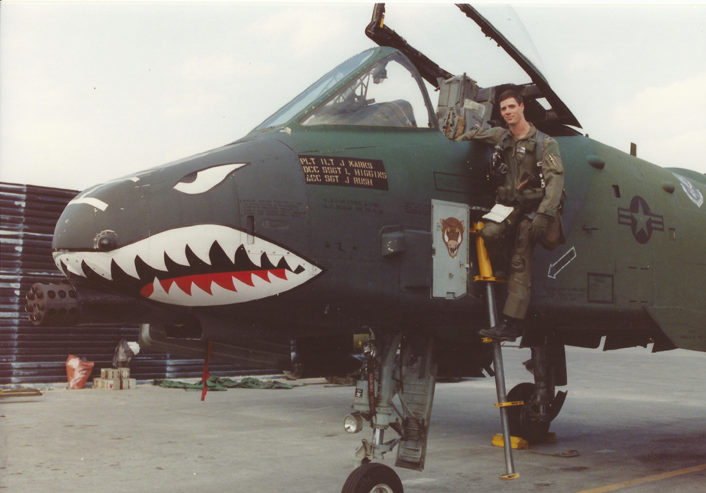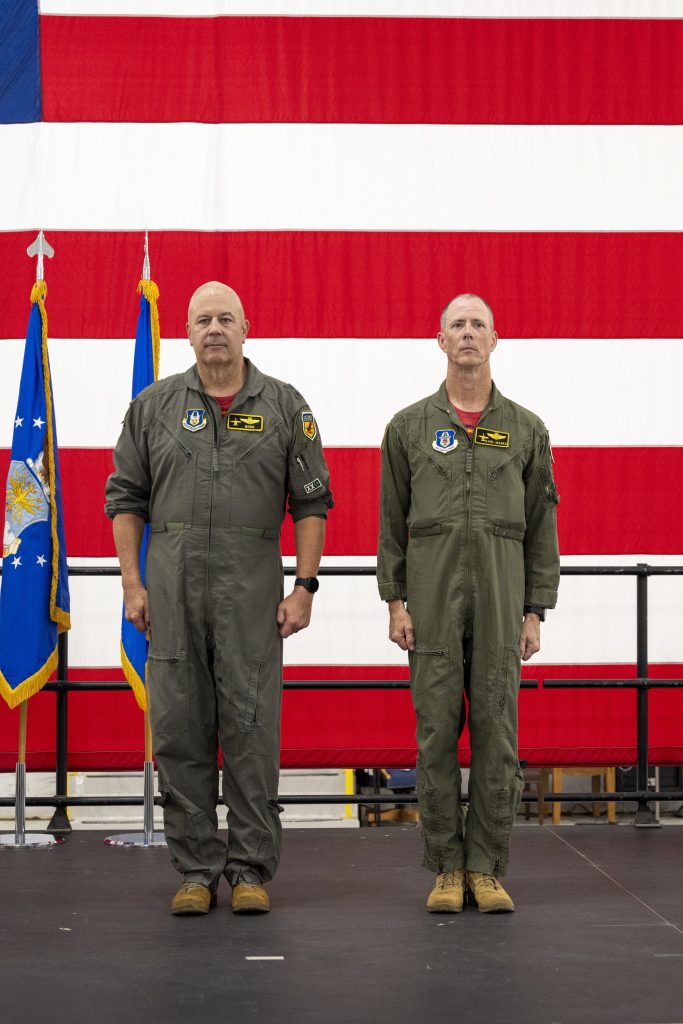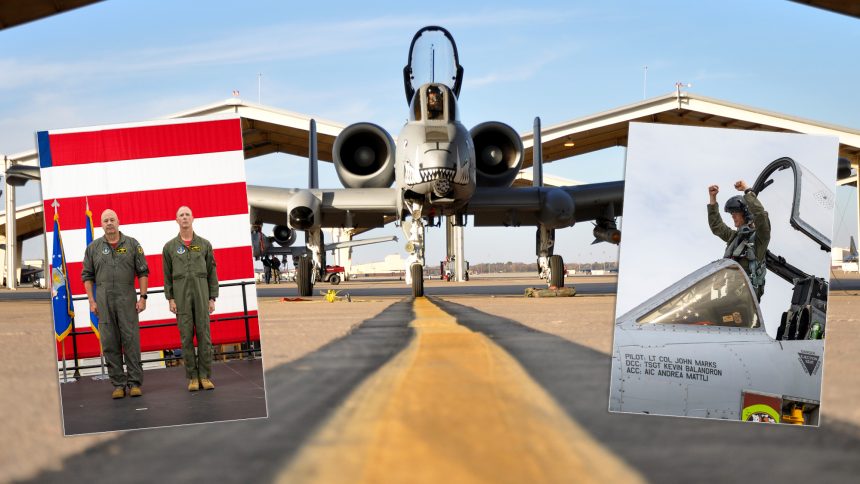With an unmatched 7,500 flight hours logged in the “Warthog,” Lt. Col. John “Karl” Marks set a record that is unlikely ever to be surpassed, as the A-10 nears its divestiture from the U.S. Air Force’s fleet.
Lt. Col. John “Karl” Marks has officially retired, marking the end of an illustrious 37-year career as the highest-time A-10 Thunderbolt II pilot in history: 7,500 flight hours, the equivalent of 312.5 days aboard the “Warthog”. His legacy as a pilot, instructor, and combat veteran will be remembered for decades to come. “Karl” had achieved the 6,000 FH mark in 2016 and 7,000 FH in 2021.

A Distinguished Career in Combat
Marks’ journey with the A-10 began in the late 1980s, with his early years flying low-altitude missions over Europe during the Cold War. At that time, the A-10 was focused on developing tactics to counter Soviet tanks, a mission that would evolve significantly over the years. As technology advanced, the A-10 became more sophisticated, integrating new sensors and weapons that enhanced its lethal capabilities. Despite changes in the operational environment—from the low-altitude strafes of Europe to high-altitude missions over Afghanistan, Iraq, and Syria—the A-10 has remained the most efficient Close Air Support (CAS) platform available.
“In the end, we can cover the ground forces with everything from a very low-altitude strafe pass only meters away from their position, to a long-range precision weapon delivered from outside threat ranges, and everything in between,” Marks explained. This versatility allowed the A-10 to adapt to evolving combat scenarios, continuing to play a vital role in modern warfare.
Marks’ combat legacy includes a series of memorable missions.
During Operation Desert Storm in 1991, he and his flight lead, Capt. Eric “Fish” Solomonson, destroyed 23 Iraqi tanks in a single day over three missions. Reflecting on that day, Marks described the apocalyptic scene with the sky blackened by oil fires and smoke as they provided crucial support to ground forces. On the same day, the A-10s landed twice at a Forward Operating Location, refueled and re-armed, and returned to the battlefield to support Marines near Kuwait City. This dedication to the mission underscored Marks’ commitment to his role and his exceptional skill in the cockpit.
Another standout moment in Marks’ career came during a mission over Afghanistan, where his actions helped relieve a ground force that was pinned down by Taliban fighters on three sides. Coordinating strikes from an AC-130 gunship, F-16s, Apaches, and AH-6 Little Birds, Marks played a crucial role in turning the tide of the battle, a mission he regards as one of the most rewarding of his career. His outstanding performance earned him the President’s Award for the Air Force Reserve Command in 2015.

A Legacy of Instruction and Mentorship
Beyond his combat achievements, Marks made significant contributions as an instructor and mentor. Of his 7,500 hours in the A-10, nearly 2,480 were spent as an instructor pilot, with an additional 598 hours serving as an evaluator. His commitment to training the next generation of pilots ensured that they were not only prepared for combat but also equipped with the knowledge and skills to safely return home. Marks was deeply invested in the success and safety of his fellow pilots, emphasizing the importance of mentorship in a high-stakes environment.
Lt. Col. Marks’ impact extended well beyond the cockpit. His dedication to the craft of flying and his selfless leadership helped shape the tactical capabilities and operational readiness of countless pilots. “Karl’s legacy isn’t just about the numbers or the hours; it’s about the lives he touched and the lives he saved,” said Col. Mike Leonas, 442d Fighter Wing Commander. Marks’ leadership and mentorship have left an indelible mark on the A-10 community.
A Fond Farewell at Whiteman Air Force Base
Marks’ retirement ceremony, held on Aug. 23, 2024, in the 5-Bay maintenance hangar at Whiteman Air Force Base, Missouri, was a fitting tribute to his exceptional career: the event drew a diverse crowd of current and former A-10 pilots, joint terminal attack controllers, family members, and friends, all there to honor a man whose service spanned nearly four decades.
Retired Major General Brian Borgen, who presided over the ceremony, recounted stories that captured Marks’ tenacity and passion for his role. Borgen shared a memorable anecdote from 2002 when Marks was upset about not being selected for a deployment to Afghanistan, highlighting Marks’ relentless desire to be at the forefront of the action. Borgen often told Marks, “Karl, we didn’t hire you for your personality,” underscoring the single-minded dedication and fierce commitment Marks brought to his role.

The Unmatched Spirit of the A-10 Community
Lt. Col. Marks’ relationship with the A-10 is emblematic of the bond that pilots often form with this iconic aircraft. The A-10, known for its durability, firepower, and close air support capabilities, has been a stalwart of the U.S. Air Force’s arsenal for decades. Marks’ connection to the A-10 went beyond the technical; it was deeply personal. The aircraft’s design and mission perfectly aligned with Marks’ approach to warfare — adaptable, resilient, and fiercely protective of ground forces.
As the Air Force prepares to phase out the A-10, Marks’ retirement also symbolizes the end of an era for the aircraft and the community that has grown around it. His record of 7,500 hours serves not only as a benchmark of individual achievement but also as a testament to the A-10’s role in supporting countless troops on the ground.









